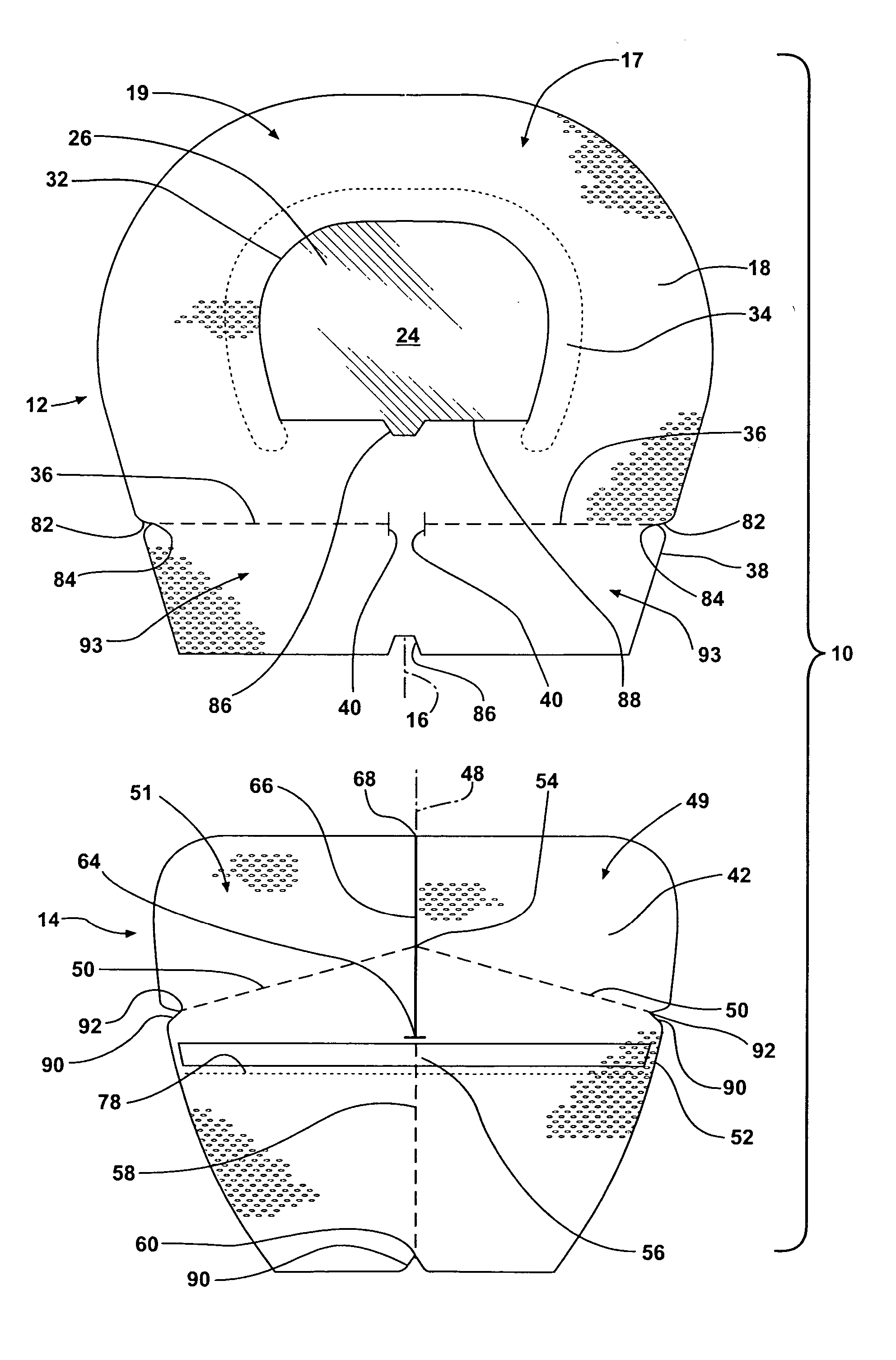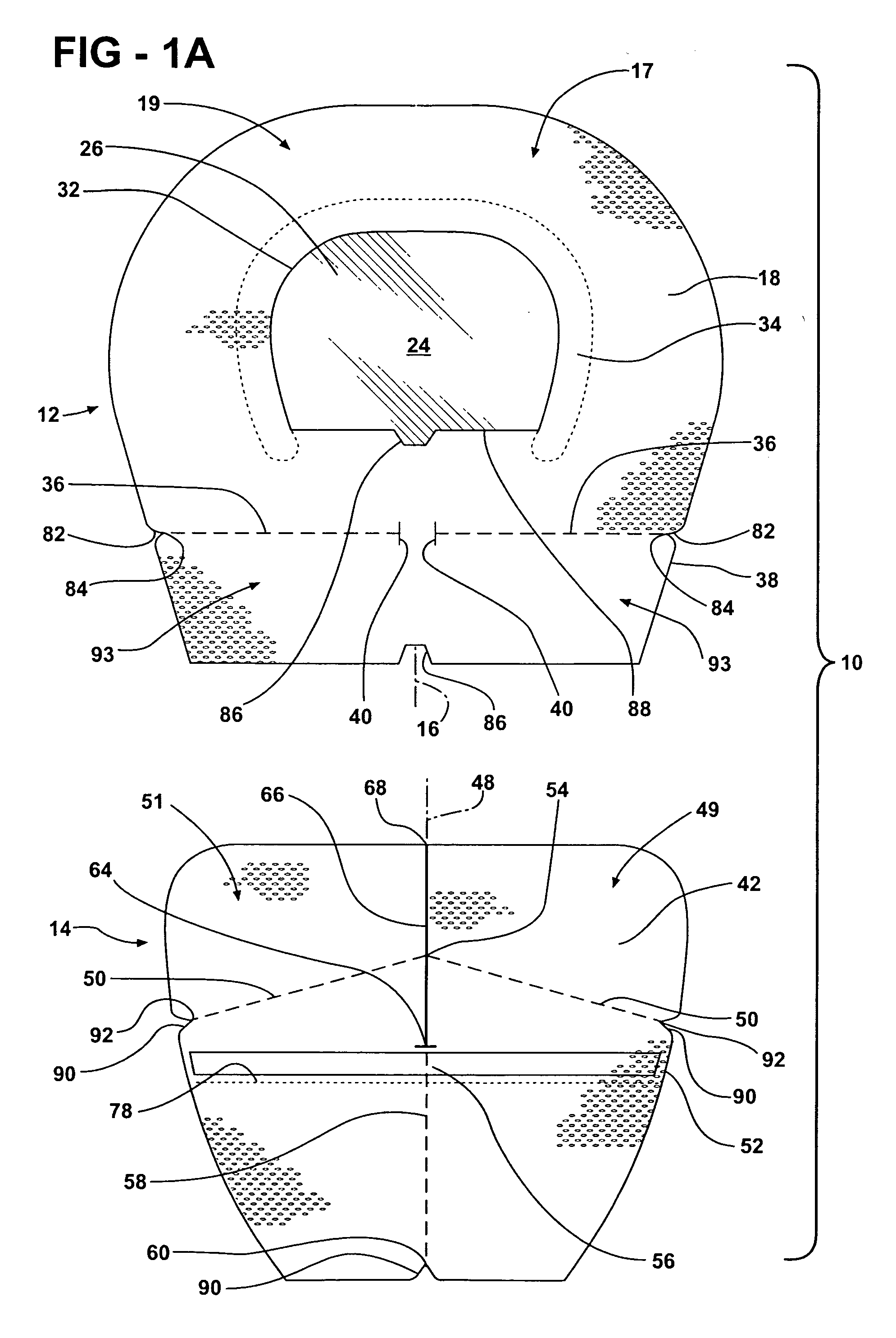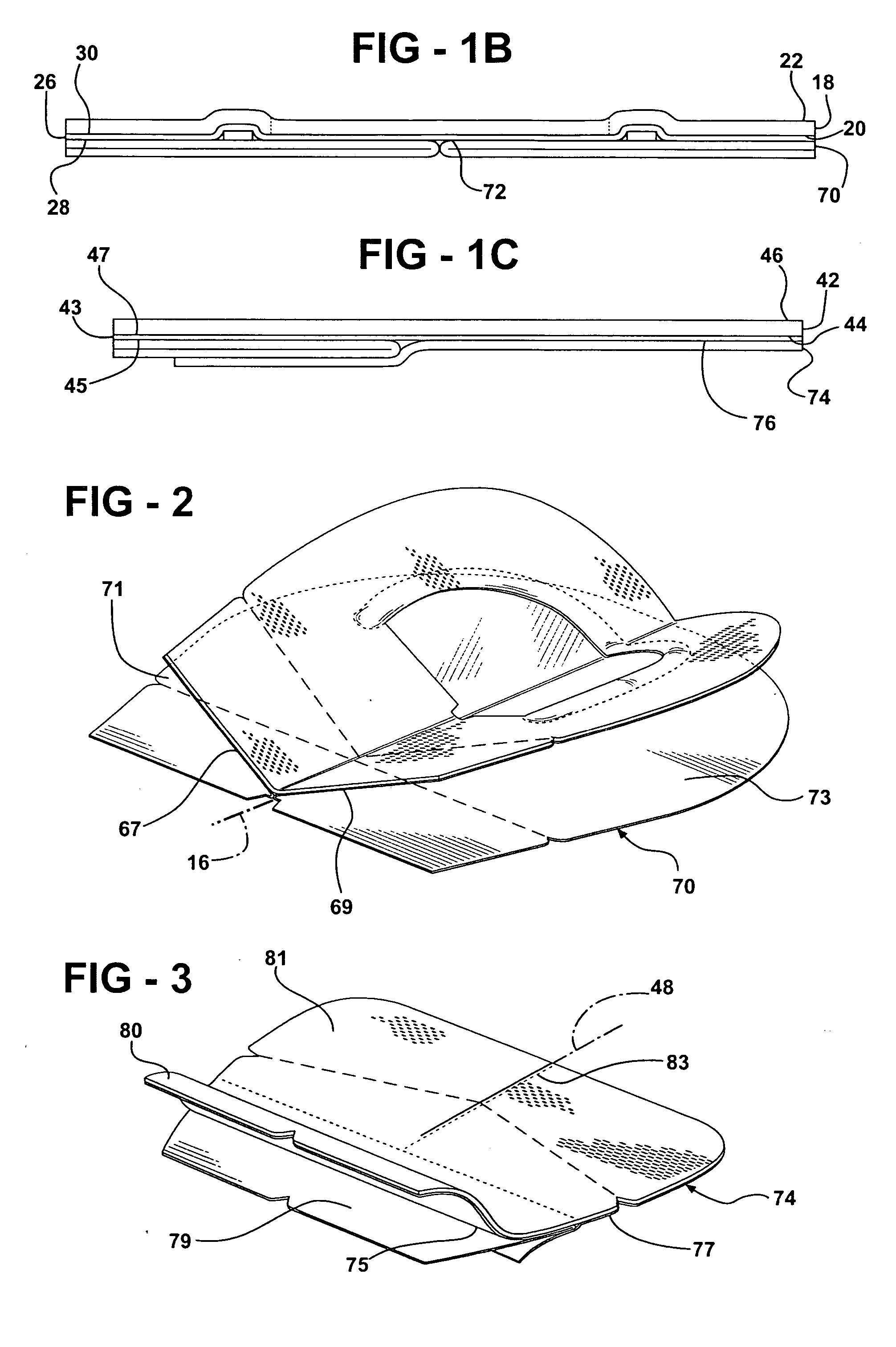Jugular and subclavian access site dressing and method
a technology for access sites and jugular or subclavian veins, which is applied in the field of skin dressings, can solve the problems of ineffective dressing, further loosening of dressing, and known prior art access site dressings that have not been able to accommodate all
- Summary
- Abstract
- Description
- Claims
- Application Information
AI Technical Summary
Benefits of technology
Problems solved by technology
Method used
Image
Examples
Embodiment Construction
[0032] Referring now to the drawings in detail, numeral 10 generally indicates a two-piece jugular and subclavian access site window dressing for the protection of a catheter access site, which is interchangeably usable on both a right or left access site, accommodates various combinations of introducer sheaths and catheters, provides security against detachment from a patient's skin during use, and provides protection against microbial ingress and site or patient systemic infection.
[0033] With reference to FIGS. 1A through 1C, in one embodiment the dressing 10 includes an anchoring member 12 and a closure member 14. The anchoring member 12 has an axis 16 that divides the anchoring member 12 into a first portion 17 and a second portion 19. The anchoring member 12 includes a fabric layer 18 having an adhesive side 20 and an opposite non-adhesive side 22. The anchoring member fabric layer 18 may comprise a white spun-lace, non-woven polyester fabric material such as DermaMed Coatings...
PUM
 Login to View More
Login to View More Abstract
Description
Claims
Application Information
 Login to View More
Login to View More - R&D
- Intellectual Property
- Life Sciences
- Materials
- Tech Scout
- Unparalleled Data Quality
- Higher Quality Content
- 60% Fewer Hallucinations
Browse by: Latest US Patents, China's latest patents, Technical Efficacy Thesaurus, Application Domain, Technology Topic, Popular Technical Reports.
© 2025 PatSnap. All rights reserved.Legal|Privacy policy|Modern Slavery Act Transparency Statement|Sitemap|About US| Contact US: help@patsnap.com



